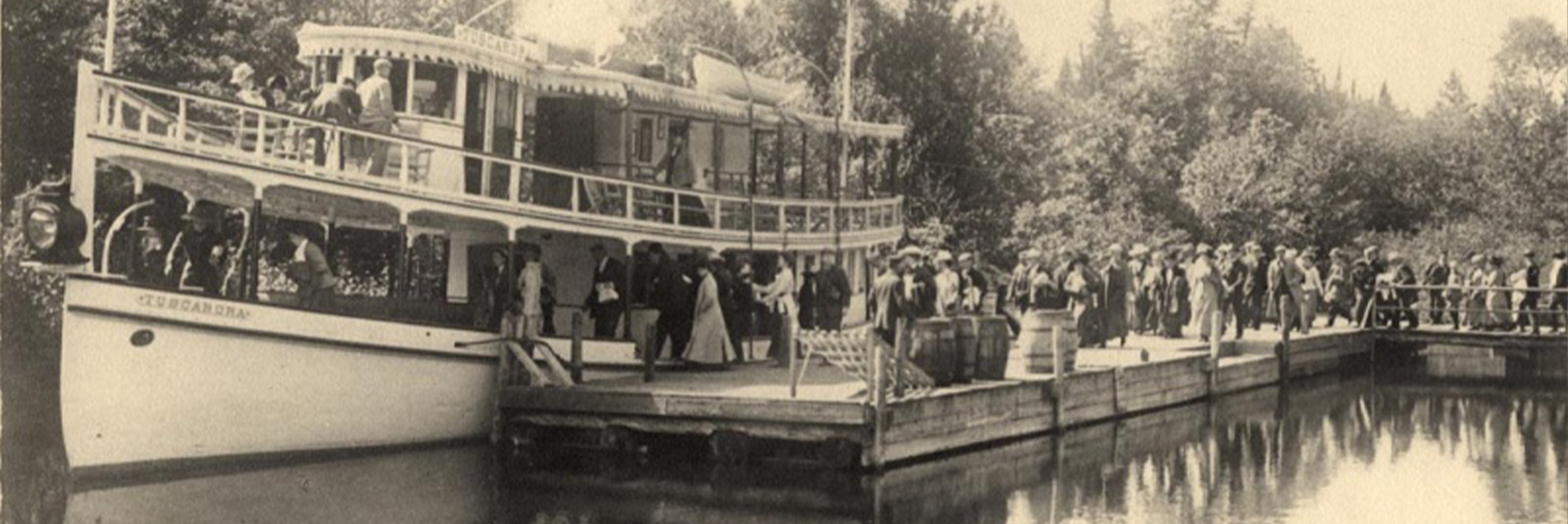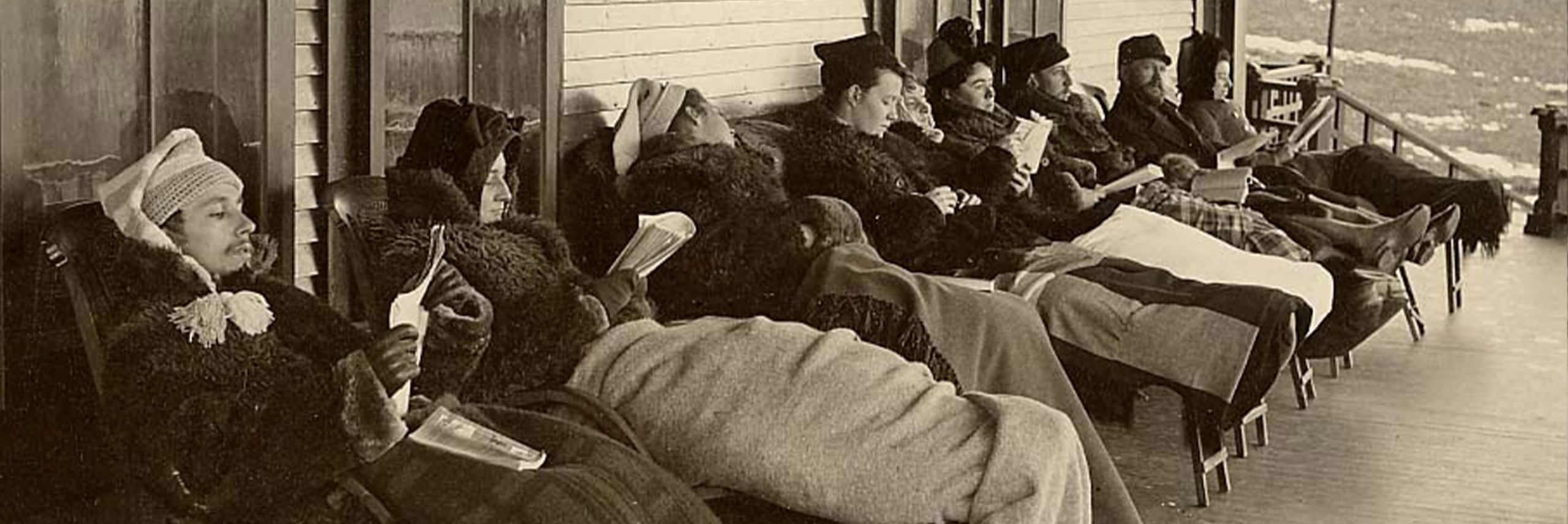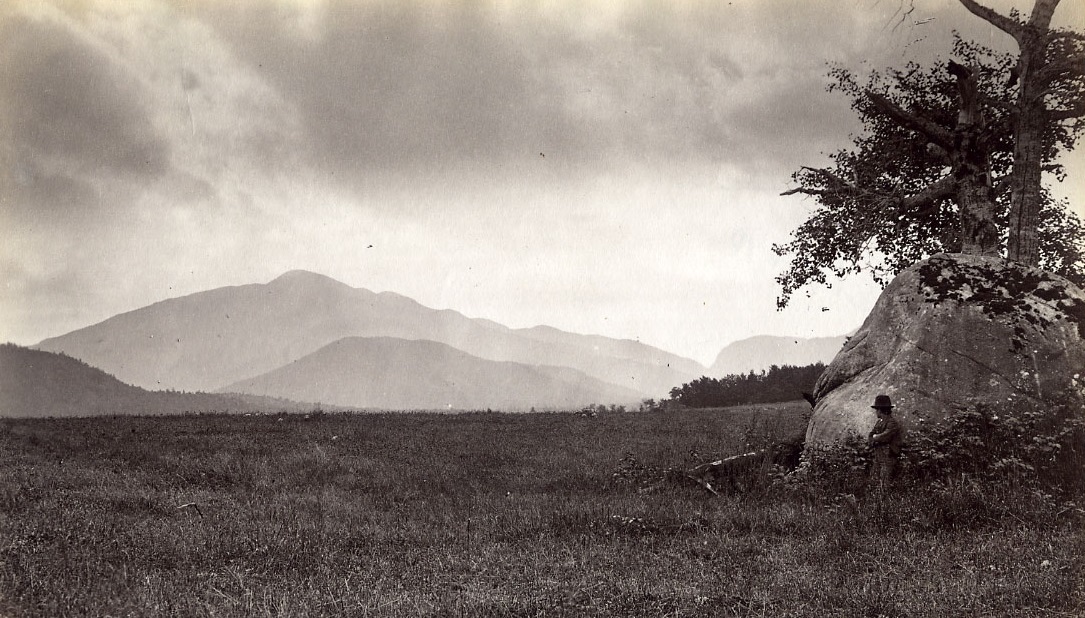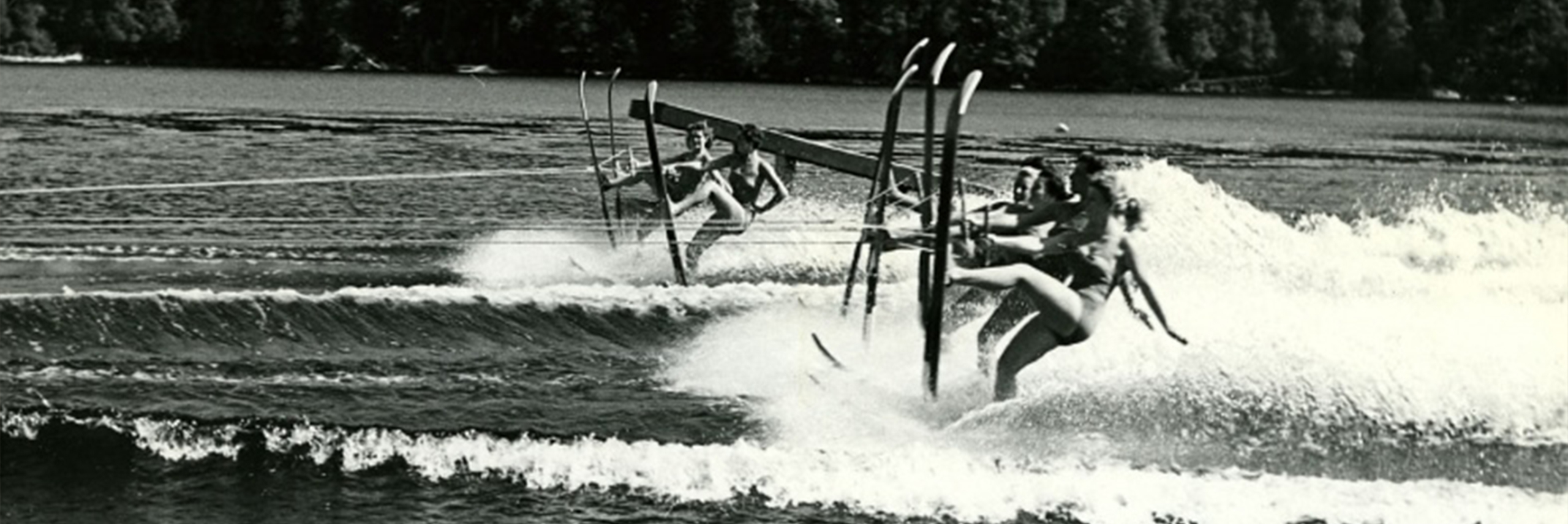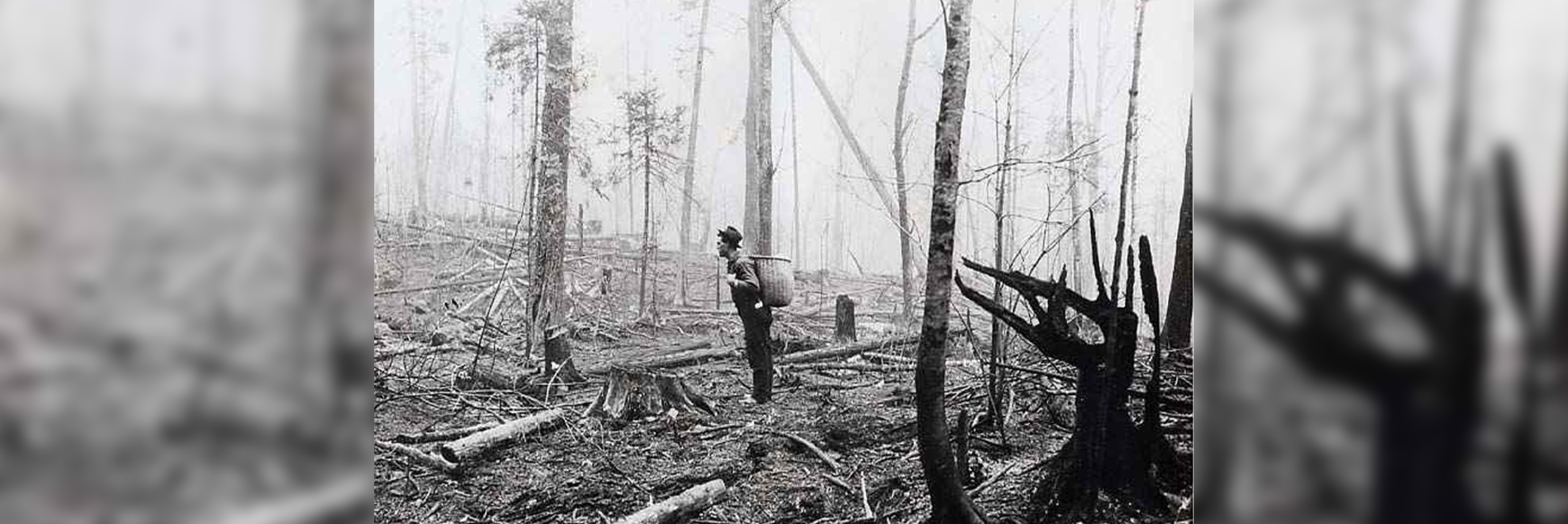Adirondack Travel
The beauty of the Adirondacks has attracted visitors since the early nineteenth century; between 1880 and 1920 Blue Mountain Lake, New York (home of the Adirondack Museum) was among the most fashionable destinations in the northeastern states.
Because of the secluded nature of the Adirondack Park, vacationing travelers have historically reached the area in a variety of interesting and often uncomfortable ways. Transportation was on their minds as well — because a journey to the Adirondacks was an adventure! The inaccessibility of the region enhanced its attraction to those with the means and leisure to make the long journey. For some, the discomfort of the trip was almost a bragging right attesting to the traveler’s ruggedness in weathering such an undertaking.
In 1880, a trip from New York City to Blue Mountain Lake could take upwards of 26 hours, covering 270 miles and involving a variety of forms of transportation. One route took travelers from the city by night boat up the Hudson River to Albany, N.Y. The boat would leave New York City at 6:00 p.m. and arrive in Albany the next morning at 7:00 a.m. From there they immediately boarded the Delaware & Hudson railroad line to Saratoga Springs, N.Y. where they would change to the Adirondack Railway, arriving in North Creek, N.Y. at 12:05 p.m. From North Creek passengers would board the Blue Mountain stagecoach that departed at 12:25 p.m. and arrived in Blue Mountain around 8:00 p.m. In 1879, the fare from North Creek to Blue Mountain Lake by stagecoach cost $3.00 and included dinner! One traveler in 1880 recounts the 30-mile trip to Blue Mountain Lake as creating a “remarkable sense of loosened joints, sore spots and general fracture.”
While the discomfort of the rough mountain road was usually the passengers’ only concern, the morning of August 14, 1901 brought a new chapter to the history of the Blue Mountain Stage. Much like a Wild West story, two highwaymen held up the stagecoach from North Creek to Blue Mountain Lake
Three miles past North River, N.Y. two masked men appeared out of the forest and ordered the stage carrying four men and three women to stop. When the driver refused to do so, the highwaymen shot the two lead horses of the four-horse coach. After the stagecoach was stopped, three of the four male passengers fled into the woods to safety. While the robbers assured the women no one would be hurt, they did take all of the valuables on board including some contents from the mailbags. When the highwaymen disappeared into the woods it was estimated that they made off with $1000 worth of valuables. Despite a search by state and federal detectives, the men were never caught.
Another unique means of Adirondack travel in the later part of the nineteenth century was by steamboat. There was an intricate system of steamboats and carries (a “carry” in the Adirondacks is a piece of land that connects two bodies of water. This is known as a “portage” in many parts of the world) that ferried guests through many of the lakes in the area. The boats provided a slightly more comfortable form of travel. Even though travelers still had to walk some distance over the land connecting waterways this form of travel was more pleasant than trips in the stagecoach or buckboard wagon.
By the 1920s, these methods of transportation became obsolete with the immergence of the automobile. R.E. Davies recounts his boyhood trips from Ridgewood, N.J. to Blue Mountain Lake taking Rt. 9W and following the Hudson River north through “every” small town. He remembers the roads being surfaced as far as Indian Lake, N.Y. where the highway became a single-track dirt road to Blue Mountain Lake. This part of the trip was a very slow process that “could not be made with the same speed as today.”
Visiting the Adirondack region has always held its level of difficulty and adventure. While now the region is easily accessible in cars on paved roads, getting to some of the more remote places by dirt road, foot or boat is reminiscent of trips made by the earliest travelers to the region.


